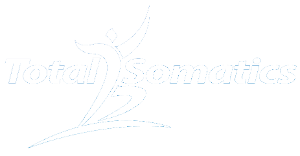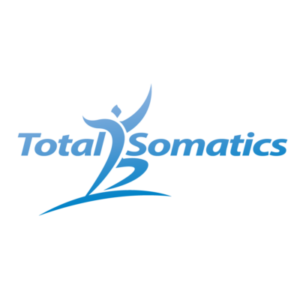Getting to the ROOT CAUSE of Pain & Stress with Somatics
Somatic Movement and Education continues to mushroom in popularity as an approach to reducing pain and improving mobility throughout the world. The powerful effects felt from Somatics is thanks to our amazing mind and body, in particular our nervous system. In this blog, we are going to look at what the main parts of our nervous system do and how Somatics can help support a healthy and resilient soma (mind and body).
In order to fully understand your amazing soma, I will break down the neurophysiology to fully appreciate how somatic movement and somatic education can change your life when you access and take advantage of your brilliant neuro and bioplastic (plastic, meaning adaptable/changeable/malleable) soma.
Your Central Nervous system (CNS)
Your central nervous system consists of your brain and spinal cord. It is the processing centre of your nervous system. Your Brain is the HQ for processing thoughts, emotions and coordination, just to name a few. Your spinal cord is the highway from HQ to the cities and towns, as it were. The highway serves as the main route of communication to and from your brain to your body. Your spinal cord will relay sensory information from your body such as your hands and feet. With this information your brain will decipher the message and relay actions and messages back down the highway of your spinal cord to the motor nerves which act on the information. As a result, this information often involves movement.
Your Peripheral Nervous System (PNS)
This is another branch of your nervous system. Your PNS connects the CNS to limbs and organs. Your PNS is also divided into two separate sections: The Somatic Nervous system and Autonomic Nervous system.
The Somatic Nervous system is involved in voluntary action which is created by skeletal muscle and includes activities such as walking and smiling. It is fast and direct. The Somatic Nervous System involves electrochemical action and response.
The Autonomic Nervous System is the involuntary portion of your PNS. It is involved in visceral functions such as heart rate, digestive function and breathing.
Within your ANS are two further branches:
The Sympathetic Nervous System
The Parasympathetic Nervous System
The SNS is involved with the fight or flight stress response. It is involved with increasing the actions of your body to create increased heart rate, breath rate, increase of cortisol and vasodilation to deal with the impending stress.
Your PNS is involved with the rest and digest mode. It slows down the actions within your body to allow for rest and recuperation. This mode allows for greater blood supply into your digestive system, a reduction in heart rate, slowing down of your breath rate, reduction in stress hormones and healthy reproductive functioning.
Although your ANS is involuntary, as a Clinical Somatic Educator, I can teach you how to harness this area. With somatic movement and breathing, you can influence whether you allow your soma to switch into the fight/flight/feign mode or the rest and digest mode.
Bessel Van Der Kolk highlights in his book, The Body Keeps the Score, that increased levels of adrenaline are responsible for a client’s dramatic rise in Blood Pressure and heart rate when they are undergoing stress, listening to traumatic accounts or talking about their trauma. The stress hormones, such as adrenaline take a lot longer to return to baseline and spike quickly and disproportionately in response to mildly stressful stimuli. As a result of living in a high state of anxiety and holding deep seated trauma, their memory, level of attention, quality and duration of sleep and level of irritability is badly affected.
It is normal for these ones to live in their head and disconnect from their body. Their body registers a threat, but their conscious mind switches off because it says ‘I do not want to go there’ and acts as if nothing has happened. The cognitive side of the brain may ignore the feedback, however in the background a constant loop (which acts like a broken record) is occurring within the emotional brain and having a huge impact on their physical body. It is constantly sending messages with the help of stress hormones to tighten muscles or in some cases immobilise as a person collapses.
Creating a State of Balance
Every soma is designed to constantly return to a state of balance or homeostasis. This means that after a stressful period of time, an injury, surgery or something similar, we should regulate, recalibrate and recuperate. However this does not always happen. In fact in life, we can endure one surgery, stressful period of time or another dilemma, one after the other. As a result of this the effects of our nervous system can create long standing issues. If you are a regular reader of my blogs, you will also know I often mention HABITUATION. If we are exposed to a behaviour, action, movement, posture, thought process or similar for long enough, it will become the “new normal.” Before we know it, we are creating pressure and stress on our soma. A state of balance or homeostasis is no longer happening within us. That’s where Somatics can help!
People who have experienced Somatics can testify that once they learn how to be somatic and notice what their nervous system is actually saying to their muscles, they can start to make huge changes. Instead of living with an authoritarian mindset, being told dis-empowering statements by health professionals such as “you have the back of an 80 year old” or “you should be in a wheelchair by now,” you can start to taking control of your own health and feeling empowered that you can create change or an improvement to your current situation.
Within the Total Somatics Approach to Health & Wellness Online program at www.TotalSomatics.com, I will guide you with techniques to increase your internal awareness, noticing how you feel from the inside out. This awareness is different to other mind and body modalities because we are working with the principles and findings within the area of somatics and neuroscience. I am really excited to announce that I have created a greater opportunity for you to heighten your internal awareness by creating a new format to the daily sequences which can be found within my online program. If you have moved on from weeks 1-4 of part 1, please go back and experience the new daily sequence format. I have designed it so that your somatic experience is a truly internalised process, increasing how you feel from the inside out. This awareness practice will help to restore a rest and digest environment within your nervous system. This is turn will allow your immune system to restore, blood pressure to lower, digestive function to recuperate, reproductive system to balance plus so much more.
Somatic Movement is a powerful movement practice to release chronically tight muscles, improve posture, increase mobility and help you develop mindfulness.
Would you like to learn more? Would you like to practice somatics in the comfort and privacy of your own home? Would you like to learn Somatics at a time that suits you and at a pace ideal for your lifestyle? That is why I created the online program, to complement and enhance your quality of life.
Somatics is becoming a fast growing and popular movement practice because it gets to the ROOT CAUSE of pain and muscle tension. You will learn how to release tense muscles the intelligent, long lasting way. You will learn why stretching is an outdated way to lengthen muscles because it was created before we actually learned the detailed relationship between your brain and muscles. Once you experience Somatics and the methodical and systematic process used to release muscle tension, you’ll see the limitations stretching has.
Intrigued? Let me guide you with my structured online program which is constantly being updated with new material and techniques to heighten your internal awareness and create approaches to reduce pain, improve posture, increase mobility and develop mindfulness.
I look forward to teaching you these amazing skills.
Take care,
Heidi Hadley xx
www.TotalSomatics.com












